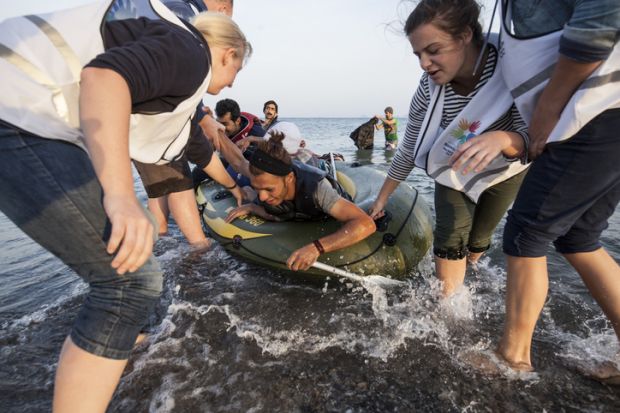The enormous gap in higher education access for refugee students is unlikely to narrow unless the sector works towards a global strategy, experts told a Times Higher Education event.
The world is now home to a record 26 million refugees, of which only 3 per cent are enrolled in higher education, according to the United Nations High Commissioner for Refugees (UNHCR).
Gül İnanç, founding co-director of the Centre for Asia Pacific Refugee Studies (CAPRS) at the University of Auckland, told THE Live Asia that the disruption caused by Covid – particularly the shift online – should be seen as an opportunity for change.
“It’s the perfect moment to ensure that this human right is embedded firmly into plans as universities engage in restructuring and long-term planning,” said Dr İnanç, who is also a lecturer at Nanyang Technological University, Singapore.
Last year, CAPRS and the University Alliance for Refugees and At-Risk Migrants pledged to the UNHCR that they would work with university ranking agencies, which could “act as new stakeholders towards inclusive global higher education for refugees”, Dr İnanç said.
THE was approached because it had just launched the Impact Rankings, which are based on the UN’s sustainable development goals. SDG 4, for example, focuses on quality education.
Manal Stulgaitis, a UNHCR education officer who oversees the agency’s tertiary education portfolio, said that she was “convinced there is a role for ranking agencies”, which can help generate awareness about the issue of refugee students. This was particularly important during Covid, when socio-economic disparity may grow.
“Any disruptive event creates opportunity for change – but there will also be issues with connectivity and poverty,” she said. Institutions should “create specific spaces, in-roads, for refugees to engage in online learning.”
She stressed that simply enrolling refugee students was not enough, and that curricula and programmes should also reflect their experiences. “We need to ensure that the content is inclusive of this new category of people who can access HE,” she said.
For Ms Stulgaitis, admitting refugee students was not about making “concessions”.
“These individuals are qualified and skilled, and bring value in enriching campus life,” she said. “Students expect diverse campuses with new perspectives.”
Lauren Clarke, vice-rector of student success and international relations at Sampoerna University in Indonesia, gave an example of how difficult it was to turn these goals into reality.
The Indonesian government, for example, prohibits stateless people from enrolling for college credits or degrees in national universities. So Sampoerna University used its status as a Broward College “international centre” and a University of Arizona “microcampus” to enrol refugee students in those US partner programmes. It had three refugee students in 2018, and has seven today.
Sampoerna University also has informal partnerships with the Roshan Learning Centre, a community initiative for refugees and asylum seekers in Indonesia, and Opening Universities for Refugees, which helps with financial aid.
“Resources are always going to be a challenge, especially this year,” Dr Clarke said. “Extending resources to new populations slips down the list. There’s the human rights agenda, and then there’s practical reality.”
Nick Sabato, director of country programs for Education for Humanity, an Arizona State University initiative that uses educational technology to reach marginalised populations, said that there should be “a seamless and complementary pathway between institutions – from the US to sub-Saharan Africa and beyond”.
The event’s speakers also emphasised the vast differences between the Global North, where most technological and financial resources are located, and the Global South, where most refugees are physically.
“There are many populations displaced by conflict and climate change,” said Dr İnanç. “It’s best that we start preparing for them now.”
Register to continue
Why register?
- Registration is free and only takes a moment
- Once registered, you can read 3 articles a month
- Sign up for our newsletter
Subscribe
Or subscribe for unlimited access to:
- Unlimited access to news, views, insights & reviews
- Digital editions
- Digital access to THE’s university and college rankings analysis
Already registered or a current subscriber? Login













